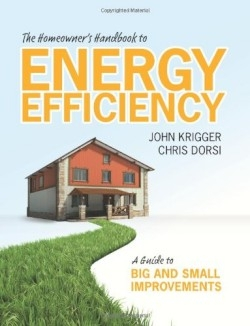A Homeowner's Handbook to Energy Efficiency
A Guide to Big and Small Improvements
This is an A to Z guide to making old houses and new houses more energy efficient, whether readers are trying to save money or save the environment. It’s a practical guide covering everything from evaluating showerheads and installing photovoltaic systems to energy efficiency considerations when building a new home.
Both authors are experts in developing energy efficient construction; Dorsi has been building houses for thirty years and writes about creating comfortable, energy efficient homes. Krigger spent three years in Europe studying super-efficient construction.
The techniques described here include many that don’t involve spending any money, but rather changing habits. “The decisions you make in the management of your lighting and appliances will have an effect on your utility bills that will be apparent in the first month,” the authors write. Although a number of these are common suggestions such as turning down your water heater and turning off lights, they are still useful reminders.
The authors also recommend developing a plan that considers both energy consumption and carbon emissions. They suggest: “Identify the small improvements that you can make right away, and get started on them.”
All of the book’s projects are solidly practical and based on an energy assessment that the homeowner can create from the provided instructions. There is also an emphasis on keeping the house comfortable and discussions of how energy savings can be fit to varying environmental conditions.
Most of the emphasis is on existing structures, but there is an excellent chapter devoted to new construction that includes information on using insulated concrete forms as well as structural insulated panel walls. The book has a detailed table of contents and a useful resource list.
Readers who want to cut their energy budget while reducing their impact on the planet will find this book an invaluable resource. While it does include the usual fix-the-leaks and plant-shade-trees advice, it also has updated tips, valuable instructions, and useful assessment tools. Its recommendations are complete, practical, and clear.
Reviewed by
Joe Mielke
Disclosure: This article is not an endorsement, but a review. The publisher of this book provided free copies of the book to have their book reviewed by a professional reviewer. No fee was paid by the publisher for this review. Foreword Reviews only recommends books that we love. Foreword Magazine, Inc. is disclosing this in accordance with the Federal Trade Commission’s 16 CFR, Part 255.

